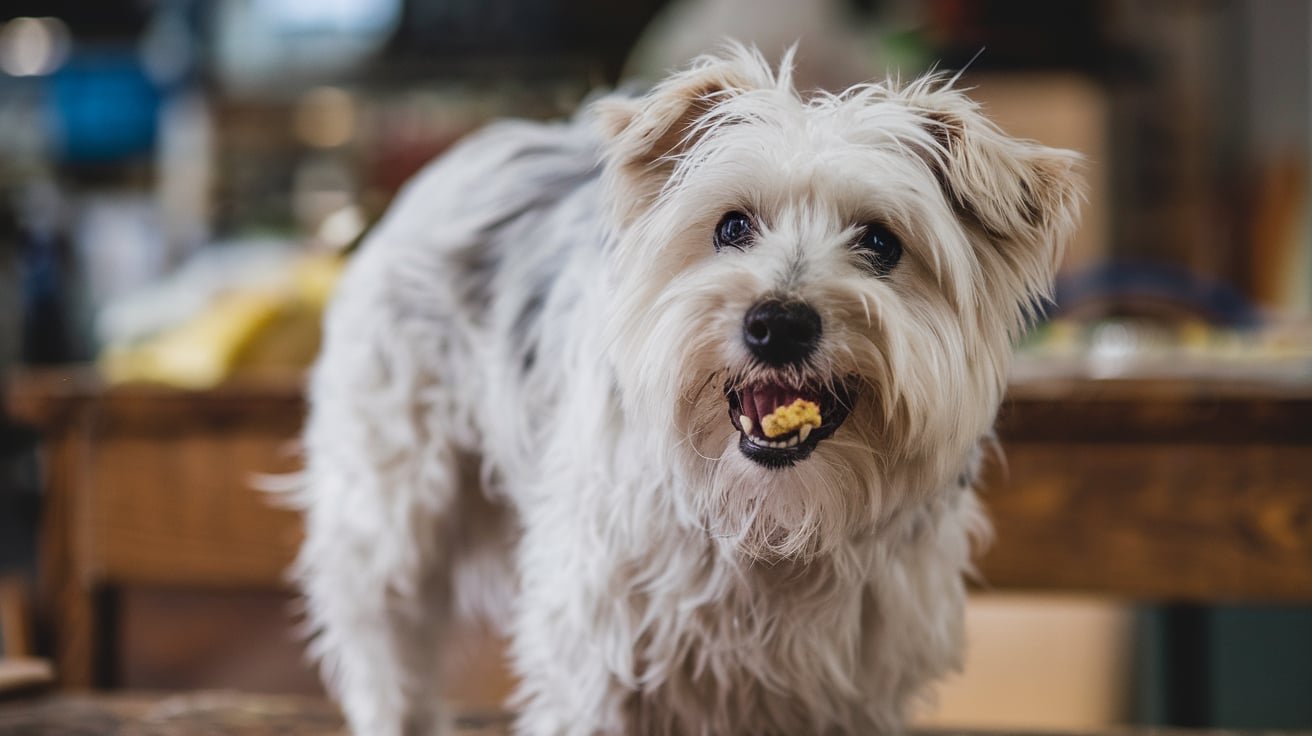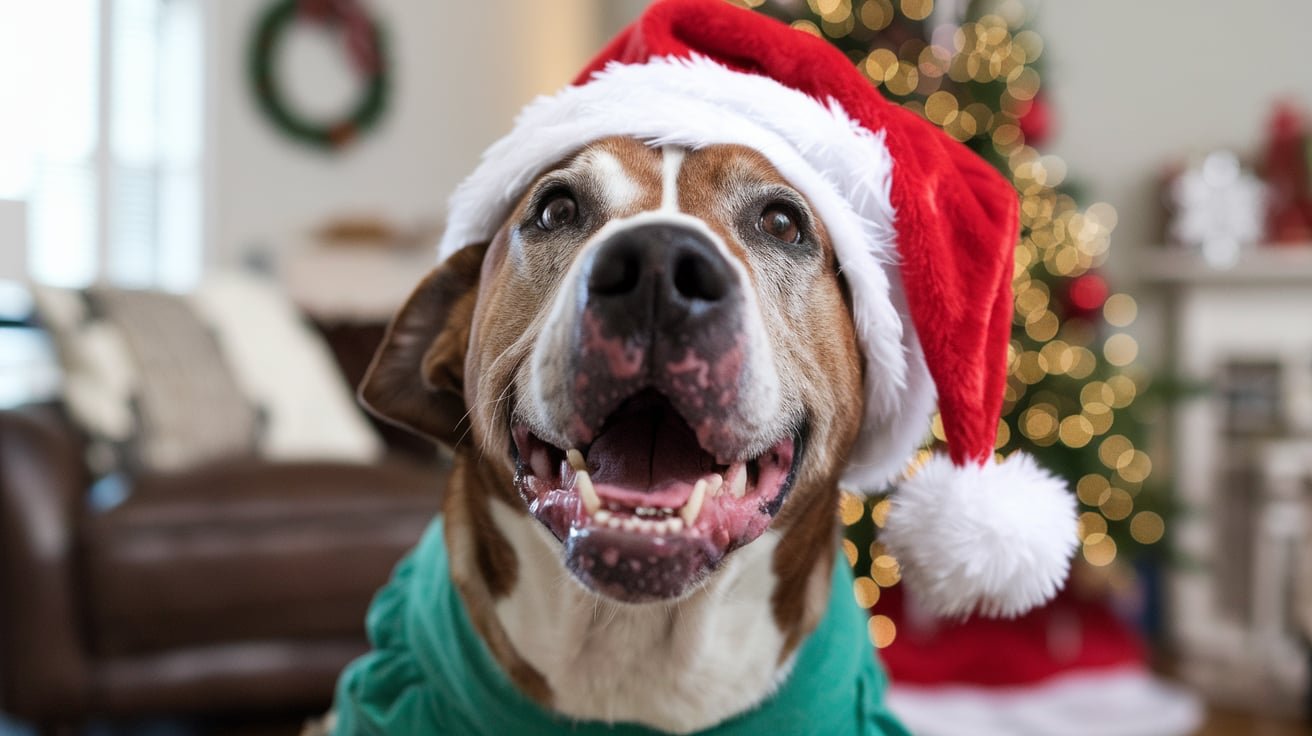Introduction To “How to Stop Food Aggression in Dogs”:
How to stop food aggression in dogs can be a stressful experience for both pets and their owners. It occurs when a dog exhibits aggressive behaviors like growling, snapping, or biting when approached while eating. Fortunately, with the right steps, you can address this issue safely and effectively. This article is designed to help dog owners in the UK understand and manage food aggression using simple, easy-to-follow methods.
What Is Food Aggression in Dogs?
Food aggression is a form of resource guarding where dogs become protective of their food. It can range from mild growling to serious behaviors like snapping or biting. This behavior is often rooted in instincts, especially if a dog has experienced food scarcity in the past or feels insecure around meals.
Why Do Dogs Show Food Aggression?
Dogs exhibit food aggression for several reasons. Understanding these causes is the first step in managing the behavior:
- Instincts: In the wild, animals naturally guard their food from others. Some dogs retain this instinct, especially if they’ve been in environments where food was scarce.
- Fear of Losing Food: Dogs rescued from poor conditions, like shelters or environments where food was limited, may develop food aggression as a way to ensure they get enough to eat.
- Dominance: Some dogs see food as a resource they must guard to assert their dominance over other pets or even humans.
- Past Trauma: If a dog has experienced negative encounters while eating—whether from humans or other animals—they may develop food aggression as a defense mechanism.
Anecdote:
Take the story of James from Manchester, who adopted a rescue dog named Lucy. Lucy had been in a shelter for months, and when she arrived home, she would growl whenever someone came near her food bowl. After working with a trainer and following the steps outlined in this guide, Lucy gradually became more comfortable, and her food aggression decreased significantly.
How to Identify Food Aggression in Dogs
Before diving into solutions, it’s essential to identify if your dog is showing food aggression. Common signs include:
- Growling or snarling when approached during meals.
- Freezing over the food bowl as someone walks by.
- Baring teeth or snapping when someone reaches for their food.
- Eating faster when someone is near, trying to finish before being interrupted.
- Lunging at people or other pets who come too close while they’re eating.
If your dog displays these behaviors, it’s time to take action.
Step-by-Step Guide to Stop Food Aggression
1. Determine the Level of Aggression
Start by observing your dog to determine how severe their food aggression is. If the behavior is mild (growling but no snapping or biting), you can work on it yourself using various training techniques. However, if your dog bites or snaps, it’s crucial to consult a professional dog trainer or behaviorist to ensure the issue is handled safely and effectively. Additionally, identifying any specific triggers, such as competition with other pets or anxiety around mealtime, can help you better understand how to stop food aggression in dogs.
2. Teach “Trade” Command
A great way to reduce food aggression is by teaching your dog the “trade” command. This encourages them to exchange the food or object they’re guarding for something better.
- Step 1: Start by offering your dog a high-value treat (like chicken) while they have a toy or chew.
- Step 2: Say “trade” as you give them the treat, and take away the toy.
- Step 3: Repeat this several times until your dog starts to associate “trade” with positive reinforcement.
- Step 4: Gradually introduce this during mealtimes by trading their food bowl for a treat, ensuring they remain calm.
3. Hand Feed Your Dog
Hand-feeding your dog can help reduce food aggression by showing them that your hand near their food isn’t a threat.
- Step 1: Sit with your dog and offer their kibble or food from your hand, one piece at a time.
- Step 2: Speak to them calmly and reward them when they remain relaxed.
- Step 3: Gradually transition to placing the food in their bowl while still rewarding them with treats when they remain calm.
4. Create a Safe Eating Space
Sometimes, food aggression stems from anxiety or feeling threatened. Giving your dog a quiet, private area to eat can help reduce this.
- Step 1: Designate a feeding space where they won’t be disturbed by other pets or people.
- Step 2: Place their food bowl in this area during mealtimes.
- Step 3: Allow your dog to eat in peace, and avoid approaching them during their meals until they are comfortable.
5. Desensitization to Approaching the Bowl
If your dog shows food aggression when you approach their bowl, desensitization can help.
- Step 1: Start by standing a few feet away while they eat. Gradually reduce the distance over several meals.
- Step 2: Once you can stand near their bowl without them reacting, toss treats into the bowl while they eat. This will help them associate your presence with something positive.
- Step 3: Over time, work on getting closer until they remain calm even when you’re right next to the bowl.
6. Use of Puzzle Feeders
Puzzle feeders can help by slowing down your dog’s eating, reducing their instinct to guard food. It also mentally stimulates them, making mealtime more enjoyable and less stressful.
Consider investing in a high-quality puzzle feeder that makes them work for their food without feeling threatened.
Products That Can Help Stop Food Aggression
There are several products that can assist in reducing food aggression:
- Slow Feeder Bowls: These bowls are designed to slow down eating, which can help reduce anxiety and aggressive behavior during meals.
- Puzzle Feeders: These feeders encourage your dog to work for their food, keeping them mentally stimulated and less focused on guarding their bowl.
- Calming Supplements: If your dog’s aggression is tied to anxiety, supplements with L-theanine or chamomile can help reduce stress.
- Training Tools: Professional trainers often use clickers and treats to reinforce good behavior during meal training.
These products, when used correctly, can make a big difference in managing food aggression. Always consult your vet or a dog behaviorist before introducing new tools or supplements.
When to Seek Professional Help
If your dog’s food aggression is severe, or if you’ve tried these methods without success, it’s important to seek help from a professional trainer or dog behaviorist. They can assess your dog’s specific needs and create a tailored training plan.
Additionally, if your dog has ever bitten anyone, do not try to handle the situation alone. Aggressive behavior can escalate if not properly addressed by a professional.
Anecdote:
Cathy, a dog owner from Glasgow, had a similar experience with her dog, Max, who growled every time someone approached his food. Unsure of how to stop food aggression in dogs, she consulted a behaviorist who recommended a combination of hand feeding and puzzle feeders. Over time, Max became more relaxed during mealtimes. It was a slow process, but Cathy’s patience and dedication paid off in the end, showing that consistent effort can successfully manage food aggression in dogs.
Preventing Food Aggression in Puppies
If you’ve adopted a puppy, now is the perfect time to prevent food aggression before it becomes an issue. Here’s how you can start:
- Handle Their Food Early: Regularly touch your puppy’s food bowl and offer them treats while they eat. This will show them that your presence is not a threat.
- Teach Basic Commands: Commands like “sit,” “stay,” and “leave it” can be helpful when preventing food aggression.
- Socialize Them Early: Expose your puppy to different people and environments while they’re eating to reduce fear or guarding tendencies.
Starting early will help your puppy grow into a well-adjusted dog with healthy behaviors around food.



